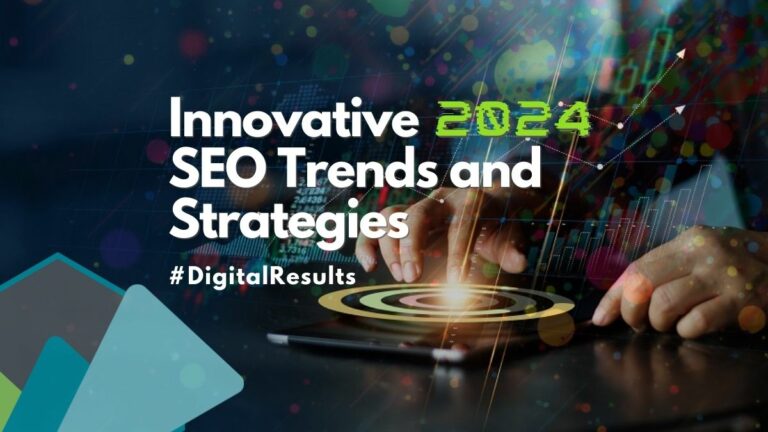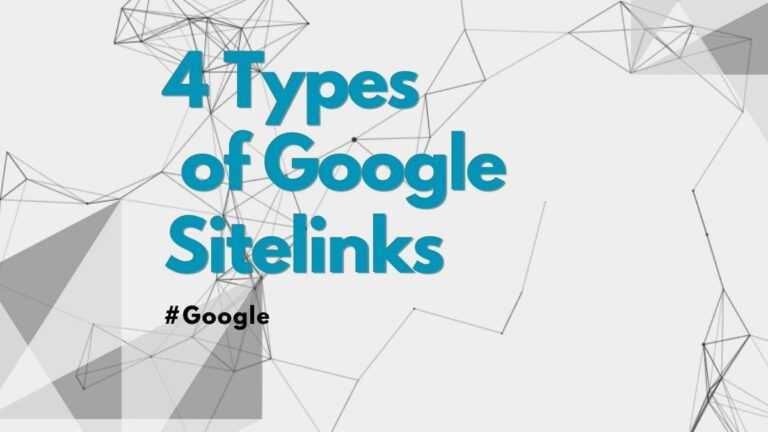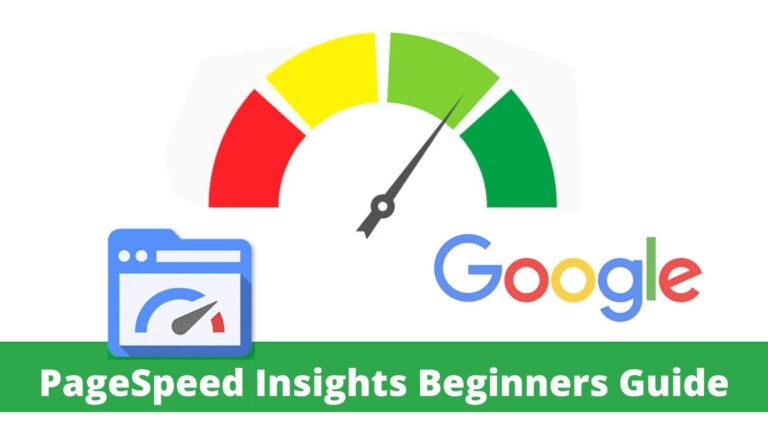Generative Engine Optimization (GEO): The Future of AI-Driven Search and Its Impact on SEO

What is Generative Engine Optimization (GEO)?
The rise of Generative Engine Optimization (GEO) represents a paradigm shift in how businesses approach digital visibility in an era dominated by artificial intelligence (AI). Unlike traditional Search Engine Optimization (SEO), which focuses on improving rankings within search engine results pages (SERPs), GEO is designed to enhance content for AI-powered platforms like ChatGPT, GROK, Google Gemini, and Bing Copilot.
As AI systems increasingly provide users with direct answers through synthesized content, optimizing for these platforms is critical to ensuring your content is surfaced in AI-generated responses. GEO emphasizes structured, modular content that AI can easily interpret and repurpose, marking a significant evolution in the digital marketing landscape.
This shift has profound implications for SEO, as businesses must adapt their strategies to stay relevant in AI-driven searches. While traditional SEO remains valuable for local queries and specific transactional searches, GEO is emerging as a necessary complement, particularly for informational and top-of-funnel content.
By incorporating citations, authoritative language, and modular content that AI can seamlessly integrate into its responses, brands can maintain visibility across a broader range of search environments. As GEO grows in importance, marketers will need to blend traditional SEO tactics with new GEO strategies to maximize their reach in the AI-driven future of search.
Definition and Core Concepts of Generative Engine Optimization
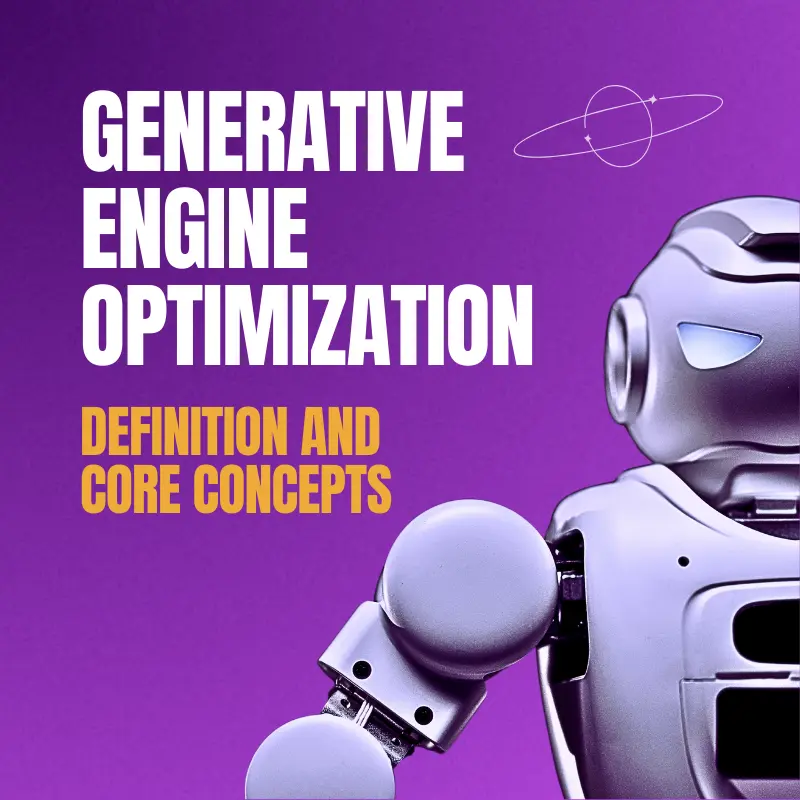
Generative Engine Optimization is unlike traditional Search Engine Optimization, which focuses on increasing a website’s ranking within search engine results pages (SERPs) on search engines like Google and Bing, GEO aims to make content more accessible and usable by AI systems. These AI systems don’t present users with a ranked list of websites but instead generate concise, synthesized answers to queries, making GEO crucial for ensuring content is discoverable in AI-generated responses.
At its core, GEO optimizes content so that AI can easily interpret and integrate it into its answers. This includes focusing on content structure, modularity, and semantic richness. For example, while SEO might prioritize keywords and backlinks to improve SERP rankings, GEO emphasizes the importance of clear headings, bullet points, and concise information.
This structure allows AI to extract key points easily, making content more likely to be selected for inclusion in AI-generated responses. GEO also requires a deeper understanding of how AI interprets language, pushing content creators to focus on context and user intent.
Another critical distinction between GEO and SEO is the target audience. Traditional SEO focuses on improving visibility for human users who search through platforms like Google and Bing. These users click on results from ranked lists to find the information they need. GEO, on the other hand, targets AI-generated summaries.
The goal isn’t to rank higher in search results but to ensure that AI systems use the content to generate direct answers. This shift is significant as more users turn to AI for quick, comprehensive responses, meaning businesses must adopt GEO strategies to remain visible in this new environment.
In a world where AI-driven searches are increasingly common, GEO represents the future of digital optimization. Businesses can ensure that AI systems select their information to provide accurate, relevant answers by focusing on modular content, clear structure, and user intent. As AI continues to change the search landscape, GEO will complement traditional SEO, helping businesses stay competitive in AI-generated and traditional search environments.
Differences Between SEO and GEO
SEO and GEO are essential digital marketing strategies, but they serve different purposes. While both aim to improve visibility and engagement, the core difference lies in their outputs and how they help content reach the audience. SEO generates ranked lists of websites on search engine results pages (SERPs).
In contrast, GEO focuses on making content usable by AI systems that deliver comprehensive, synthesized responses to user queries. This fundamental distinction marks a shift in how businesses must think about optimization to remain competitive in the age of AI-driven search.
One of the most significant differences between SEO and GEO is the output. SEO’s primary goal is to get a website to rank as high as possible on a traditional search engine. When a person searches a query, the search engine delivers a ranked list of web pages based on relevance, authority, and other SEO factors.
GEO does not generate a list of websites; instead, it optimizes content so AI systems can generate comprehensive answers to queries. These AI search engines, such as ChatGPT and Google Gemini, synthesize content from multiple sources to create a coherent response, bypassing the need for users to click through to individual websites.
SEO and GEO differ in their emphasis on content optimization. SEO focuses heavily on keywords, backlinks, and content length to signal relevance and authority to search engines. The goal is to ensure that the content appears on the first page of results, drawing in users who click on the link.
GEO, on the other hand, prioritizes structured and modular content. AI systems need content that is easy to break down into digestible parts, meaning that headings, bullet points, and well-organized sections are more valuable for GEO than a traditional SEO-focused approach. Additionally, GEO emphasizes semantic richness over keyword density, providing context and meaning that AI can understand and repurpose for its summaries.
Another difference between SEO and GEO is how their success is measured. SEO metrics include traditional performance indicators such as click-through rates (CTR) and engagement metrics such as bounce rates and time spent on page. These metrics are crucial for understanding how users interact with search engine results and whether they find the content engaging.
GEO introduces new metrics, focusing more on impression metrics, which measure the visibility of citations and content in AI-generated responses. These metrics track how often an AI engine references or uses a piece of content in its answers, reflecting the shift from website visits to content integration in AI-driven searches.
The need for SEO and GEO strategies grows as AI systems integrate more into search experiences. SEO remains important for driving traffic through traditional search engines, particularly for transactional and local queries. However, businesses must also adopt GEO techniques to ensure their content is visible in AI-generated responses, which are becoming more common for informational queries, ensuring they maintain a solid digital presence across all platforms.
Strategies for Implementing GEO
Implementing Generative Engine Optimization (GEO) requires a strategic approach to ensure your content is optimized for AI-driven search engines like ChatGPT, Google Gemini, and Bing Copilot. One of the most important strategies involves content structure, which needs to be clear and easily digestible for AI systems.
Unlike traditional SEO, which can handle long-form content with dense information, GEO thrives on well-organized sections with clear headings and bullet points. This structure allows AI engines to parse content efficiently and extract relevant information to generate user responses. Organizing content in this way improves your visibility and makes it more likely that AI systems will utilize your material.
A key aspect of optimizing for GEO is creating modular content. This means breaking down your material into smaller, standalone components that can be repurposed across different contexts. For example, a “sustainable business practices” article could be segmented into modules covering energy efficiency, waste reduction, and sustainable sourcing.
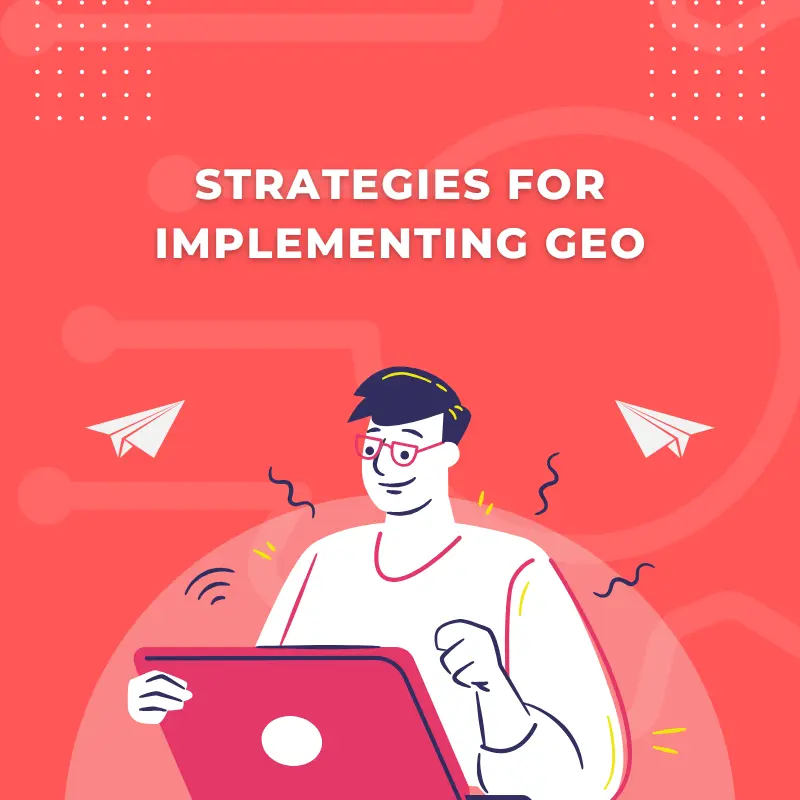
Each section can function independently, making it easier for AI systems to select and repurpose relevant information. This modular approach increases the chances that your content will appear in various forms across different AI-generated summaries, giving you broader exposure.
Incorporating citations, data, and quotations is another essential strategy for GEO. AI-driven engines rely heavily on sourcing accurate and credible information to produce trustworthy responses. Adding citations from authoritative sources, using relevant statistics, and including expert quotations significantly boost your content’s visibility.
These elements enhance the richness of your content and its authority. Studies have shown that AI systems are more likely to use content with well-supported facts and references in their generated responses. Additionally, statistics and expert opinions provide AI with the context it needs to formulate well-rounded answers.
The E-E-A-T principles—Experience, Expertise, Authoritativeness, and Trustworthiness—are foundational for both SEO and GEO, but they play a particularly critical role in GEO. Initially designed for Google’s algorithm, these principles ensure that credible, experienced sources produce reliable and accurate content.
In the context of GEO, adhering to E-E-A-T guidelines increases the chances that AI systems will recognize your content as authoritative. For instance, including personal anecdotes, case studies, or professional certifications can demonstrate your expertise, while linking to reputable sources further solidifies your content’s trustworthiness.
When optimizing for GEO, focusing on user intent is crucial. AI-driven engines are becoming increasingly adept at understanding context and user needs. This means that content tailored to answer specific questions or provide clear, concise explanations will perform better in AI-generated responses.
Crafting content that directly addresses user intent helps human readers and aligns with how AI processes and delivers information. The more your content meets user expectations, the more likely it is to be featured in an AI-generated summary.
Content updates and audits are equally important for maintaining GEO effectiveness. As AI systems evolve, businesses must regularly audit their content to ensure it remains aligned with the latest optimization techniques.
This involves evaluating whether the content is structured correctly, whether new citations and data need to be added, and whether any modules can be further refined for AI use. Conducting regular content audits ensures that your material performs well and stays relevant across both traditional and AI-driven search engines.
Using AI tools to assist in the content creation process can effectively meet GEO requirements. AI can help generate initial drafts, analyze content structure, and identify areas where citations or additional statistics improve visibility. However, human oversight is essential to ensure that the final product adheres to E-E-A-T principles and maintains the brand’s voice. By blending AI-generated content with human expertise, businesses can create content that resonates with AI systems and readers.
Impact of GEO on Businesses
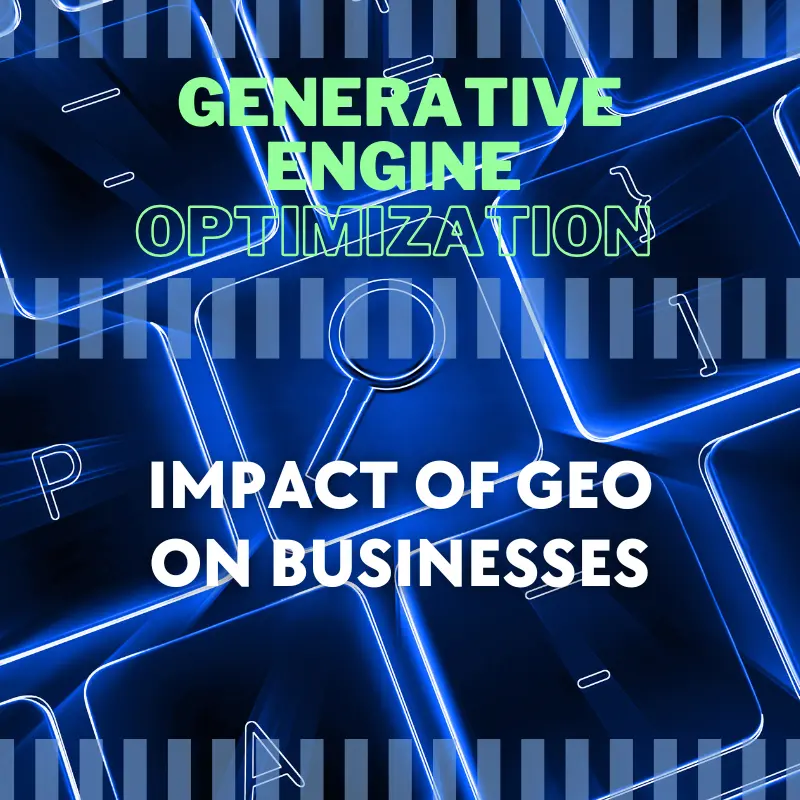
The rise of Generative Engine Optimization (GEO) is expanding the reach of businesses beyond traditional search engines, offering new opportunities for visibility on AI-driven platforms like ChatGPT, GROK, and Google Gemini. Unlike traditional SEO, which focuses on improving rankings on search engine results pages (SERPs), GEO helps businesses get their content featured directly in AI-generated summaries and responses.
This shift opens doors to broader exposure as more users turn to AI systems for quick, synthesized answers rather than browsing through a list of search results. As a result, businesses that adopt GEO strategies early can gain a significant advantage in the evolving search landscape.
For businesses, the combination of increased reach and search optimization through GEO represents a powerful tool for staying competitive. As AI-driven searches become more prevalent, relying solely on traditional SEO could limit visibility. Incorporating GEO techniques allows companies to remain relevant and accessible across all platforms, from text-based searches to voice-activated queries. This proactive approach to optimizing websites helps future-proof a business’s digital strategy in an era of rapid technological advancement.
Future of GEO and SEO
As GEO continues to grow, it’s clear that it won’t fully replace traditional SEO. Instead, the future of digital marketing will likely rely on a hybrid approach where GEO and SEO work together to maximize visibility across conventional and AI-driven platforms. SEO remains critical for ranking on search engine results pages (SERPs), particularly for transactional and local queries where users actively click through to websites.
Conversely, GEO optimizes content for AI-generated responses, ensuring businesses appear in answers provided by AI systems like ChatGPT and Google Gemini. By balancing both strategies, companies can target human users on traditional search engines while staying visible on AI-driven platforms.
This hybrid approach will become increasingly important as the digital landscape evolves, particularly as AI-driven searches gain more traction. Businesses that rely exclusively on SEO may find their reach limited to traditional search results, missing out on opportunities in AI-generated summaries.
However, integrating GEO alongside SEO ensures that content can be repurposed and presented across both environments, offering a wider reach. For instance, while SEO might help a local business rank highly on Google, GEO could ensure that a business’s information is included in a voice assistant’s answer when a user asks for nearby services.
Another critical factor in this hybrid strategy is the need for domain-specific optimization. GEO’s effectiveness can vary greatly depending on the industry or content type. Different domains require distinct optimization tactics to maximize visibility in AI responses. For example, content in the healthcare or government sectors may benefit from citing authoritative sources and including relevant statistics to improve factual credibility.
Meanwhile, historical or opinion-based content may perform better with authoritative language and references to experts in the field. Understanding which strategies work best for a domain is critical to successfully implementing GEO.
Looking forward, businesses must adapt as SEO and GEO strategies evolve continuously. Search engines like Google increasingly incorporate AI-driven elements into their traditional results. SEO will likely adopt some of GEO’s techniques, such as content structure and modularity. At the same time, AI systems will become more sophisticated in processing and selecting content, making it even more crucial for businesses to stay up to date on both fronts.
By embracing a hybrid approach and tailoring strategies to specific domains, businesses can future-proof their digital presence and remain visible in traditional and AI-driven search environments.
Practical Implementation Tips for GEO
Implementing Generative Engine Optimization (GEO) effectively requires a thoughtful and strategic approach, starting with pilot projects. Testing GEO in smaller, niche areas before launching it across all your content helps assess its effectiveness and make necessary adjustments.
For example, if you manage a website with multiple service categories, you could optimize a single section—like blog posts on digital marketing strategies—before rolling out GEO across other areas. This allows you to gather data, analyze performance, and refine your approach based on what works best. Pilot projects help reduce the risk of a full-scale implementation while providing valuable insights into the impact of GEO.
One key aspect of successful GEO implementation is maintaining the human touch. While AI can be instrumental in generating initial content drafts, it often requires more nuance and personality for engaging, high-quality writing. Human editors play a critical role in polishing AI-generated content to ensure it reads naturally and resonates with the intended audience.

For instance, an AI-generated article may contain accurate information but lack flow or emotional connection. A human editor can refine sentence structure, adjust tone, and ensure the piece aligns with your brand’s voice. This step is essential for preserving authenticity and trustworthiness in your content.
Another valuable tip is leveraging AI tools to assist in the content creation process. AI can streamline the initial drafting phase by generating topic outlines, suggesting relevant keywords, or creating summaries.
For instance, if you’re producing a guide on “sustainable business practices,” AI tools could help generate sections on energy efficiency, waste reduction, and sustainable sourcing. However, while AI tools can save time and effort, they should be used as a starting point rather than the final product. Human oversight is crucial to refining these drafts, ensuring factual accuracy, and enhancing the overall credibility of the content.
Integrating AI-driven keyword research into your GEO strategy can boost content visibility. AI tools such as SurferSEO or SEMrush can identify the most relevant keywords for both SEO and GEO.
For example, if your content focuses on “AI in healthcare,” an AI-driven keyword tool might suggest related terms like “AI diagnostics” or “AI in patient care.” Keywords like these can be naturally incorporated into your content, aligning with traditional SEO strategies and GEO’s need for semantically rich language. The goal is to ensure your content is optimized for human and AI-driven search platforms.
Regular audits of your content are also vital for GEO success. As AI technologies and user search habits evolve, content that worked well a year ago may no longer be optimized for the latest AI-driven platforms. Regularly revisiting and updating your content ensures it stays aligned with the best practices for both GEO and SEO.
For example, reviewing blog posts to ensure they contain the most up-to-date statistics, relevant citations, and modular sections helps maintain visibility in AI-generated summaries. This proactive approach ensures your content remains competitive in an ever-changing search landscape.
Remember that collaboration between AI and human efforts is vital. AI can provide data-driven insights and efficiency, but human creativity and intuition are irreplaceable. The most effective strategy involves blending both to create high-quality content that meets the expectations and demands of modern search engines.
For instance, AI might suggest a structure for an article on “digital marketing trends.” Still, human writers and editors will craft the narrative, add depth, and ensure the content resonates with the target audience. By combining the strengths of both AI and human expertise, you can create content that excels in both GEO and SEO environments.
Challenges and Considerations for Implementing GEO

As businesses adapt to Generative Engine Optimization (GEO), content adaptation is one of the key challenges. Traditional SEO tactics like keyword optimization and backlink building may become less effective, particularly for informational queries. AI-driven platforms such as ChatGPT and Google Gemini focus on providing direct answers to users, often bypassing the need for users to click on search engine results.
When a user asking, “What are the benefits of sustainable business practices?” might receive a fully synthesized answer from an AI system without visiting any website. As a result, businesses must rethink how they structure their content, focusing on clear, concise, and modular formats that AI can easily incorporate into its responses.
Another challenge is the introduction of new metrics to measure GEO’s success. Traditional SEO metrics like click-through rates (CTR) and bounce rates may no longer apply when users receive answers directly from AI systems. Instead, GEO requires impression metrics, which track how often content is referenced or cited in AI-generated responses. These metrics can provide insight into how visible and relevant your content is within AI platforms.
In this case, a company that frequently appears in AI-generated summaries for queries related to “AI in healthcare” might measure its success based on the number of times its content is cited rather than the number of users who click through to its site.
To overcome these challenges, businesses must develop a proactive approach to monitor and adjust their GEO strategies. This includes regularly auditing content for alignment with AI-driven search behaviors and updating content with fresh citations, statistics, and structured formats. For example, ensuring that long-form blog posts are broken down into digestible modules makes it easier for AI systems to use and ensures continued visibility. Businesses that adapt quickly to these new metrics and content requirements will be better positioned to stay competitive as the search landscape evolves.
Balancing GEO and SEO for Maximum Visibility in the AI-Driven Future
As the generative search engine landscape evolves, Generative Engine Optimization (GEO) is emerging as a powerful complement to traditional SEO strategies. GEO addresses the growing demand for AI-driven content by optimizing information for platforms like ChatGPT and Google Gemini. While SEO remains critical for securing rankings on search engine results pages (SERPs), GEO allows content to be efficiently repurposed by AI systems, ensuring businesses remain visible in AI-generated summaries. This dual approach helps brands reach a wider audience and stay competitive across traditional and AI-driven search environments.
The shift toward AI-powered search presents both opportunities and challenges. On one hand, GEO opens doors to broader exposure by allowing content to be featured in quick, synthesized responses to user queries. On the other, it requires businesses to adapt their strategies by focusing on modular content, semantic richness, and user intent.
Traditional SEO methods like basic keyword optimization are no longer sufficient for informational queries where users seek direct answers. Implementing GEO alongside SEO ensures that content is ranked on search engines and featured in AI responses, providing a balanced and future-proof strategy.
As AI-driven searches become more prevalent, businesses must continuously audit and update their content to remain relevant. By integrating GEO strategies with SEO, companies can leverage both strengths to maximize visibility. Regular content reviews, incorporating fresh citations and ensuring modularity, will help maintain a strong presence across AI platforms. Ultimately, the hybrid approach of GEO and SEO allows businesses to thrive in an ever-evolving digital world, ensuring they are well-positioned for the future of search.

Ready to Grow Your Search Engine Results?
Let Digital Results assist you in your SEO strategy and help
deliver the search engine results you need.

